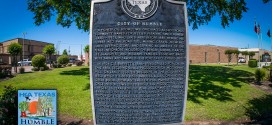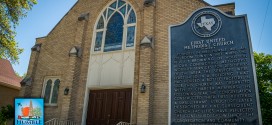Early reports of natural gas seepages in this area were not uncommon in the late 19th century. James Slaughter noticed such natural occurrences near the San Jacinto River in 1887. Several years later, with S. A. Hart, he set up a drilling operation in the area, but it proved unsuccessful. Charles Barrett, a former Huston merchant, also drilled wells here, but found the results limited. In 1904, the Higgins Oil Company brought in a major gas well and the following year, the first successful oil well was drilled. This area, known as the Moonshine Hill section of the great Humble oil field, became the site of a boom town. Within months of the 1905 discovery, the population of the Moonshine Hill settlement increased to 10,000. Early operations associated with the site included the Moonshine Oil Company of Walter Sharp, Ed Prather, and Howard R. Hughes. Although tents comprised most of the early structures, Moonshine Hill eventually included a church, school, postal station, stores, hotels, and saloons. Despite three separate boom eras, the last occurring in 1929, Moonshine Hill declined as a community. Its brief existence, however, had a dramatic impact on the economic development of Humble and Houston. Texas Sesquicentennial 1836 – 1986
[google_map location_id=”1046″/] HKA Texas Humble, Kingwood, Atascocita, Texas Humble, Kingwood, Atascocita, Texas
HKA Texas Humble, Kingwood, Atascocita, Texas Humble, Kingwood, Atascocita, Texas



